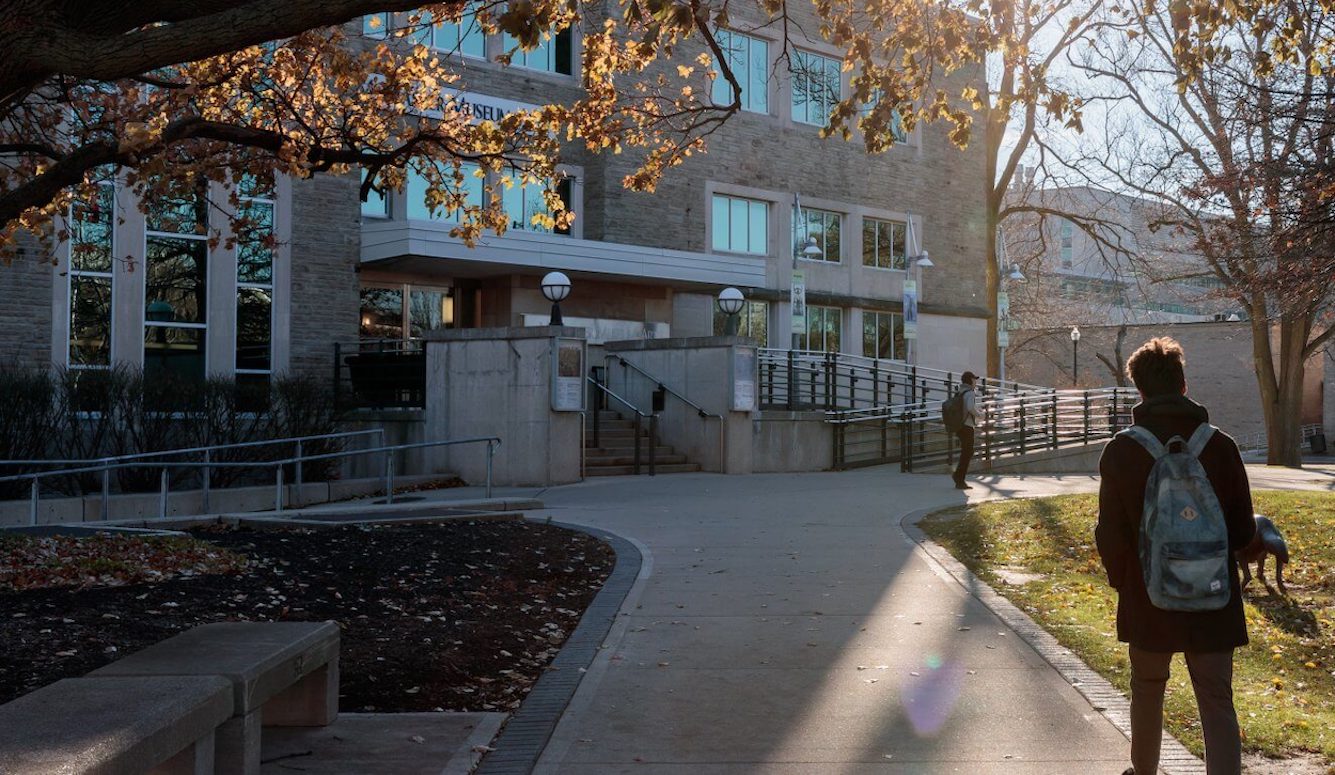Education
How Activists Took Control of a University: The Case Study of Evergreen State
Understanding these mechanisms can hopefully produce a broader sense of how ideologically motivated people are able to acquire and wield so much power.

The student protests that took place at Evergreen State College earlier this year were remarkable, drawing international coverage and substantial analysis here and elsewhere. Video recordings of students screaming at biology professor Bret Weinstein are iconic, as are those of a faculty member telling two other faculty members “you are now those motherfuckers that we’re pushing against.”
The most memorable scenes, though, are those that involved college president George Bridges. The scenes of Bridges meekly acquiescing to students’ demands for delayed homework after they occupy his office and hurl insults at him, telling him to “Get to work” and to “Get the fuck out of here”, and of him later standing up in front of students as a focal point as they scream at him, nodding as a student tells him “We had civilisation way before you ever had, coming out your caves” are surreal.
Throughout these scenes, Bridges repeatedly apologises to the students. On several occasions, he’s admonished for raising his hands while speaking, which he immediately accommodates by lowering them or putting them in his pockets, to the students’ great delight. (Meanwhile, students are screaming at him and jumping up and down.)
The scenes suggest a mild-mannered college president whose only mistake is failing to draw boundaries when he’s overwhelmed and intimidated by angry protestors. And more generally, of an autonomous group of student protestors going too far, encouraged by a lone faculty member or two. There is, it turns out, much more to the story.
* * *
In an interesting and well-written article in The Washington Examiner, Weinstein and Heather Heying—a fellow former biology professor at Evergreen who’s married to Weinstein—provide their account of the protests. Although Weinstein has previously shared his story, and other insiders have added their perspective, the Examiner article offers a more detailed account than I’ve seen before.
While I highly recommend reading the full article, I’ll briefly recap the main points, as I understand them.
In 2015, Evergreen hired a new president, Bridges, who almost immediately began expanding administration, allying himself with factions focussed on race, and remaking school policies to place more emphasis on equity and social justice. He also emboldened protestors by apologising to them and by consistently refusing to draw boundaries.
At a meeting held by the ‘Equity Council’, faculty members were read an equity manifesto and were given a binary choice: you’re either allies or enemies. A few months later, white people were asked to leave campus for a day, replacing what had previously been a day where people of colour voluntarily stayed away. Weinstein voiced his dissent on both occasions to what he felt was an unreasoned and intimidation-based approach, and was met with accusations of racism.
A few weeks after the second incident, student protestors held Weinstein—and later several other faculty members, including Bridges—hostage while they subjugated and humiliated them. A faculty member later that day proudly wrote an email saying: “They are doing exactly what we’ve taught them today”. Weinstein was told by police that he needed to get off campus, and that they couldn’t protect him because they’d been ordered to stand down. Weinstein and Heying were denied leave, so they settled with the college and left for good.
So, while Bridges might have appeared to outsiders as a victim of the protests, Heying and Weinstein show otherwise. Bridges systematically implemented a grievance culture by empowering radical faculty members, rejecting reasoned discourse in favour of the sanctity of subjective experience and multiple truths, promoting a binary worldview of allies and enemies, draping major initiatives in vague notions of equity and social justice, and consistently apologising for every accusation, whatever its merits. Eventually, he was devoured by a beast of his own creation, as anger and righteousness engulfed the students and they were egged on by radical faculty members acting without restraint.
Despite all that has happened, Evergreen has continued undeterred along the path set by Bridges when he arrived. When confronted in an interview with a student’s statement that he’s a white supremacist, Bridges said he doesn’t believe he is, but was quick to add “I’m a white person in a position of privilege.” Towards the end of their article, Heying and Weinstein remark that they feel “we were paid to leave a burning building. “
* * *
Evergreen is interesting, in my opinion, because it provides a case study of an institution where a small minority of ideologically motivated people have been able to exert immense influence. While Bridges as college president has a lot of formal authority, he couldn’t have changed Evergreen as he did through that alone. As Heying and Weinstein explain, he and his faculty allies employed several other mechanisms to intimidate people and shut down resistance. Understanding these mechanisms can hopefully produce a broader sense of how ideologically motivated people are able to acquire and wield so much power.
You don’t have to look for very long at the current landscape to notice there are many places where this is relevant. Consider a months-long investigation of elite Boston-area private school Tufts University by The Foundation for Individual Rights in Education:
Students have been systematically investigated, interrogated by police, and punished by Tufts for speech the university claims, generally, to permit. What’s more, numerous students told us the campus climate is “toxic” for free inquiry, with a passionate but small and exceptionally like-minded student body attempting to silence “offensive” or disfavored speech — even reporting it to administrators and police, or characterizing it as a literal act of “violence.” These mutually reinforcing phenomena create a perilous combination for students who want to speak their mind at Tufts: Open disagreement isn’t just “social suicide” — it can get you in serious trouble.
What does Evergreen teach us about the mechanisms that produce this type of situation? While some of Bridges and his allies’ actions were traditional exertions of power—Bridges expanding administration and firing an influential potential dissenter, and a faculty member threatening other faculty members—there are three mechanisms worth examining closer, I think, as they are much subtler and tie directly into ideology:
- A binary classification of allies and enemies that’s vaguely defined but emotionally and morally charged.
- A notion of multiple truths and the sanctity of subjective experience that’s selectively applied.
- A notion of an extremely powerful but intangible power structure.
I’ll briefly go through each one.

Mechanism #1: A binary classification of allies and enemies that’s vaguely defined but emotionally and morally charged.
The Equity Council—whose members Bridges had appointed and empowered—arranged an emotionally charged meeting full of platitudes and tears, after which people were asked to step down to the stage in front of everybody and form a giant canoe in a ritualistic performance with drums beating in the background. The implication being that you were either onboard or not, with no in-between. The Strategic Equity Plan they were ostensibly affirming was never actually read. (Apparently, an alum later presented a critique of the statistical foundation of the plan, to which Bridges promised a response that never came.) This followed a process where Bridges and his allies implemented multiple initiatives under vague notions of equity and social justice, and where any resistance was struck down as ‘anti-equity’.
This is a very potent mechanism, because it combines two things. On the one hand, an emotionally and morally charged classification that leverages people’s aversion towards being labelled anti-equity, racist or a similarly charged term, as well as their fear of the repercussions that come from being branded as such. On the other hand, an extremely vague definition of these terms and of the requirements for being classified one way or the other. This grants the classifiers tremendous power. If the requirements for being an ally or enemy—and more generally, being anti-equity and racist—were well-defined, there would be much less power in the hands of those making the classification, because it would follow automatically. And of course, that would also be the case if the classification were less charged and thus had fewer repercussions.
The combination of these two factors, though, mean that it’s almost entirely within Bridges and his allies’ discretion who to label an enemy (or a racist, or anti-equity), with severe repercussions for the person involved. The results, as Heying and Weinstein lay out, is that people became scared to critique anything Bridges or his allies did. All public responses were positive, giving the illusion of consensus, while in private many people expressed disagreement and concern. In some sense, this mechanism functions as a power enhancer. Some power is necessary to be in position to implement it (in this case, Bridges’s position as president), but once implemented it enhances that power. Bridges can shut resistance down in a way he wouldn’t be able to through his formal authority alone.
Eventually, this mechanism spread to students as well, providing a tool for students to exert power over other students.
Mechanism #2: A notion of multiple truths and the sanctity of subjective experience that’s selectively applied.
When questioning the equity plan, Weinstein was also faced with another response. He was told by colleagues that “there are multiple versions of ‘truth’ that exist at once.” And that: “If our students are telling us … that they are experiencing a hostile environment, we must take our students at their word.”
This was put to the test when students confronted Weinstein, and two of his students came to his defence. They were shouted down. Why were their truths not accepted? In an interview, another student claims that she’s “afraid to have a nuanced opinion” and that she doesn’t feel she has “the ability to speak” if she has disagreements with the methods used in the protests. Why is her truth not accepted, and why is her experience of a hostile environment not taken at her word?
The answer, it seems, is that not all truths are accepted, and not all experiences of hostility or oppression are taken at their word, or even accepted at all. Only those that fit the dominant narrative are. In practice, the idea of multiple truths and taking students at their word is another mechanism used by Bridges and his allies. In effect, their initiatives and arguments become irrefutable; at any hint of resistance they can simply point to claims by one or more students, while rejecting any questioning of those claims. Yet, when students make claims against their arguments, they just avoid appealing to multiple truths and to taking students at their word.
Mechanism #3: A notion of an extremely powerful but intangible power structure.
Weinstein was regularly met with the claim that Evergreen is full of white supremacy and racism, and that the safety of students of colour is threatened. Yet, no evidence was ever presented. In fact, questioning this was itself regarded as an act of racism. This, too, functions as a mechanism of power for Bridges and his allies. By pointing to white supremacy as the dominant but intangible power structure, they justify their own tangible power structure as being defensive. People, especially those in left-leaning environments, are sensitive to accusations of oppression and authoritarianism. By appealing to a stronger power structure that they’re resisting, they deflect such accusations. They position themselves as liberators, not oppressors. Consequently, it allows them to bypass the normal processes that prevent power from accumulating in the hands of a small number of people. After all, if the real power is in the hands of this intangible structure, then they can’t really have it.






